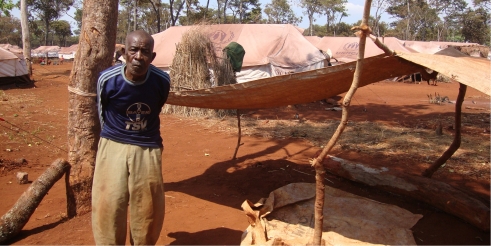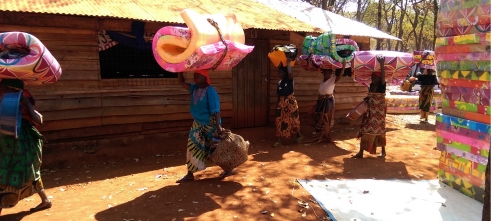
Older man at a refugee camp in Tanzania (c) Agnes Mwangoka/HelpAge International
By Ben Small
As refugees continue to flee violence and uncertainty in Burundi, the camps where they seek sanctuary in Tanzania are becoming increasingly stretched.
Some 110,000 Burundians are already spread across two camps, Nyarugusu and Nduta. With an average of more than 300 additional refugees arriving every day, there are concerns the capacity of these camps will reach breaking point.
Rainy season a great threat to inhabitants
Together with Oxfam, Plan International, Save the Children, the International Rescue Committee and the Danish Refugee Council, we have warned that the continued influx of refugees and the onset of Tanzania’s rainy season pose a big threat to the camps’ inhabitants.
Already vulnerable people are in cramped, overcrowded mass shelters where the damp conditions are causing respiratory problems and high prevalence of waterborne diseases.
When the rains hit, this will only be exacerbated as areas flood, causing damage to tents and toilets, while the water harbours malaria and cholera.
“Rains and damaged toilets bring the threat of disease – a huge risk given that people are living in such close quarters, and conditions for the frail and chronically ill are likely to get worse,” said Amleset Tewodros, Tanzania Country Director for HelpAge International.
“Many NGOs are working hard to provide tents, food, water and sanitation, but we are all struggling with too few resources and worsening conditions.”
Older people in the camps
Although data from the United Nations High Commissioner for Refugees (UNHCR) shows that just 5% of Burundian refugees are aged 50 and over, these older people are an especially vulnerable group with specific needs when it comes to nutrition, health and access to relief.
We have advocated for age-friendly services within the camps to ensure older people are prioritised during registration and at food and relief item distribution points, along with other vulnerable groups.
Age-friendly essential items such as mattresses, mobility devices, blankets, sweaters, energy-saving stoves and solar lamps are also being distributed to older men and women. In addition, one-off cash transfers have helped 2,500 older people to buy the food and medical items they need.

Older women collect mattresses (c) Agnes Mwangoka/HelpAge International
Opening a third camp
A third camp called Mtendeli is due to open up soon to relieve some of the stress on Nyarugusu and Nduta. However, this has already forced some agencies to reduce their work in Nyargusu to ensure there is support across all camps.
The crisis is already 64% underfunded, according to the UNHCR Burundi Situation Funding Appeal Update. With a third camp opening, there will be some difficult decisions about how to allocate limited resources.
“Governments should realise that refugees across the world – no matter where they flee – need sustained help. More funds, released faster, are desperately needed,” said Steve Thorne, Tanzania Country Director at Save the Children.
Find out more:
- Read about our emergencies work.
- Explore what we do in Tanzania.
